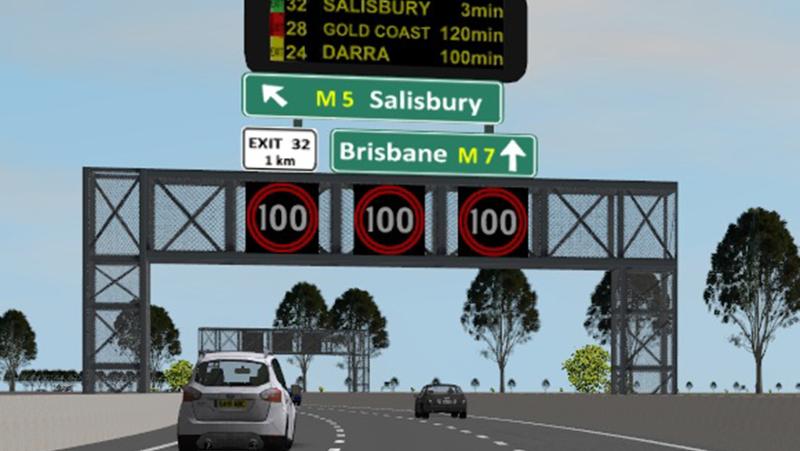
The growing trend to install multiple road signs at the same location along Australian freeways might be practical and cost-effective but is it safe?
A new QUT study, published in Transportation Research has looked at the impact of locating up to three signs on a freeway gantry (bridge-like overhead structure) and found driving performance is not affected and drivers are able to respond safely to an emergency situation.
Co-author Dr Gregoire Larue, from QUT’s Centre for Accident Research & Road Safely – Queensland (CARRS-Q), said the increasing complexity of road systems meant there was a need for more information to be conveyed to drivers, and often in a dynamic way.
“Therefore, there is a need for well-designed road signs to assist drivers,” Dr Larue said.
“The practical (due to limited space) and cost-effective solution is often to co-locate signs along highways.”
As part of the study, 35 drivers were exposed to multiple signs with varying messages, while driving in the CARRS-Q driving simulator.
Participants completed three simulated drives and were shown similar information during each drive, including a directional sign, a variable messaging sign and a variable speed limit sign.
“In each scenario the three signs were positioned at one, two or three locations along a freeway with a speed limit of 100km/h.
“What we found was that overall there was no impact of co-locating signs on general driving performance and drivers were able to correctly choose their destination whether there were single or multiple signs displayed at the one location.
“Driving behaviour in terms of being able to take the correct exit suggests that sign information was correctly understood, therefore providing strong evidence that the signs were comprehended.
“The results also showed minimal impact on reaction time in response to an emergency event, which required the driver to take evasive action.
“Drivers were safely able to respond to an emergency braking situation while successfully detecting changes in direction advised by signage.”
Dr Larue said overhead signs were an important part of the road environment and were designed to help drivers reach their destination efficiently.
“Road agencies are increasingly viewing co-locating signs as a positive option for example where multiple crucial messages are required over a short distance of road.
“Importantly, this study did not identify any higher risks of triple co-located signs compared to the current scenarios of no co-location and dual co-located signs.”
Dr Larue said the research results helped road authorities to reduce construction and maintenance costs by confirming that they could position multiple signs at one location without causing difficulties for drivers.
The paper is titled Safety implications of co-locating road signs: A driving simulator investigation and was authored by Dr Ashleigh Filtness (QUT/Loughborough University), Amy Schramm (QUT), Dr Joanne Fuller (QUT), Prof Andry Rakotonirainy (QUT), Dr Clarissa Han (Australian Road Research Board) and Peter Cairney (Australian Road Research Board). The study was funded by Austroads.
Media contact:
Sandra Hutchinson, QUT Media (Tue, Wed), 07 3138 9449 or media@qut.edu.au
After hours, Rose Trapnell, 0407 585 901




